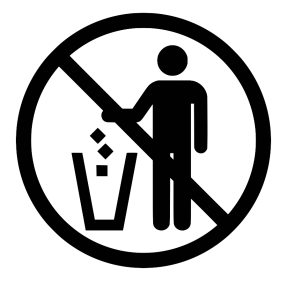Understanding and Fixing your Credit Profile
Have you ever randomly walked up to someone outside of a 7-11 and asked to borrow twenty bucks? If you have, then you’ll probably agree it wasn’t very easy (and in most cases not successful). Why do you think that is? It’s probably because those people don’t know you and because they don’t know, they don’t know if they’ll get their money back. Lenders are the same way, only they don’t get to know you like your friends, co-workers, or family get to know you. Getting to know a person that way would take far too much time. Instead, lenders opt for a much quicker way; looking at your past actions as a way to get to know you.
One way they do this is by looking at your credit profile. Essentially your credit profile is a make-up of every time you’ve used credit, financing, obtained a loan, got a line of credit, etc. Typically most lenders or financial institutions report to different credit bureaus. They report things like the amount you borrowed, if you paid on time, if you exceed your credit limit (credit cards/revolving credit), when the account was opened, etc. By compiling all those transactions, credit bureaus are able to build a profile of you and assign a score to that; known as your FICO score.
So you’re probably asking yourself, what’s a good credit profile look like? And if I don’t have it, how do I get it? The good news is that obtaining a good credit profile isn’t some mystical dark secret, nor is it for the elite or filthy rich; all it takes is a little effort, constituency, and planning.
Clearly, if you’re still reading this then you’re either trying to look really busy at work or you’re actually looking to learn something. Either way, we’ll go over some tips below on how to achieve good credit, what lenders are looking for, and how to repair your credit profile if you haven’t been so nice to it.

Do you know what your FICO score is right now? Do you know what lending institutions have reported to the credit bureaus? If the answer is no, then pulling a free copy of your credit report is the place for you to start. You are entitled to one free credit report directly from all three major credit bureaus a year (Experian, TransUnion, and Equifax). However, there are many free websites that will allow you to access these reports individually and in real time (I use CreditKarma.com to keep an eye on mine).
But why is it important to know it? Well, there a couple reasons. Now I won’t lie to you, the major reason is so you aren’t surprised by the rate/terms you get if your credit is poor; similarly, you shouldn’t be surprised by favorable rates if your credit is good. If you watch any amount of T.V., you’ve seen the fancy car commercials that promise you the world but have that pesky stipulation: On Approved Credit or Well Qualified Buyers. Knowing your credit score helps you determine if you’re in the group or not.
The other reason is pretty simple…people make mistakes. As we discussed above, your credit report is a compilation of every time you’ve used someone else’s money to buy something. Sometimes the people, “institutions”, reporting to the credit bureaus make mistakes! A run through of your credit report will easily alert you to any erroneous reporting. If you happen to find any mistakes on your credit report, you may contact the credit bureau to dispute it (We’ll save that discussion for another time).
Step 2. Handle open collections on your Credit Profile
Once you’ve pulled you report from each bureau (or one), you should know if you have any outstanding debts/collections. Do yourself a favor and pay those off, (if possible) or try to work something out with the company. Otherwise, you’re going to pay a higher rate, if you can even get approved. You’ve got to look at it this way, why would someone give you more money if you haven’t paid back the people who lent you money earlier? They wouldn’t, or they’re going to want to make sure the payoff is worth the risk. The less risky you are, the better your rate or terms are going to be. Paying off your $65 cable tv collection could end up saving you thousands!

Step 3. Pay down revolving credit on your Credit Profile
Handled all your collections or just don’t have any? Good! (Congrats by the way!) The next step is to start freeing up your credit. Lender’s like to make sure that all your money isn’t going to paying bills other than the one your trying to take on. Additionally, not having a large amount of your income going to other bills also gives you some wiggle room if you get sick or injured.

Just because you aren’t using that card doesn’t mean you should close it; especially if there is no yearly fee for it. Lenders like to see credit history in your credit profile, which you will have trouble building if you close old cards; so make sure you leave the oldest card open. Also, closing cards can actually hurt your credit score as it lowers the available credit to debt ratio. So, if you’re able to, leave those older free cards open and spend a little bit of money on them here and there.
Step 5. The hard way isn’t always best
Naturally when you’re looking to get financing, you’re going to shop around for the best rate. Be careful! Every time your credit gets pulled its noted on your credit report; it’s called a “hard pull” or “hard inquiry”. The other type of credit pull is called a “soft pull” or “soft inquiry”. Too many hard pulls on your credit profile is a red flag to a lot of lenders, so don’t be afraid to ask what type of pull your lender is using. Soft pulls do not show up on your credit profile. (Sorry, shameless plug ahead) Working with a broker is a benefit in this situation, among many others, since we pull your credit once and submit that report to our network of lenders.
You’re probably saying to yourself, “Ya duh” and you’re right. Most of this is pretty common sense, it’s just hard to practice because well….life. Remember that good credit takes time and you’re not going to get it overnight. Make small changes over a period of time to see big results to your credit profile. Most importantly, do what you can when you can and know your profile so you walk into any deal prepared.



Leave a Reply